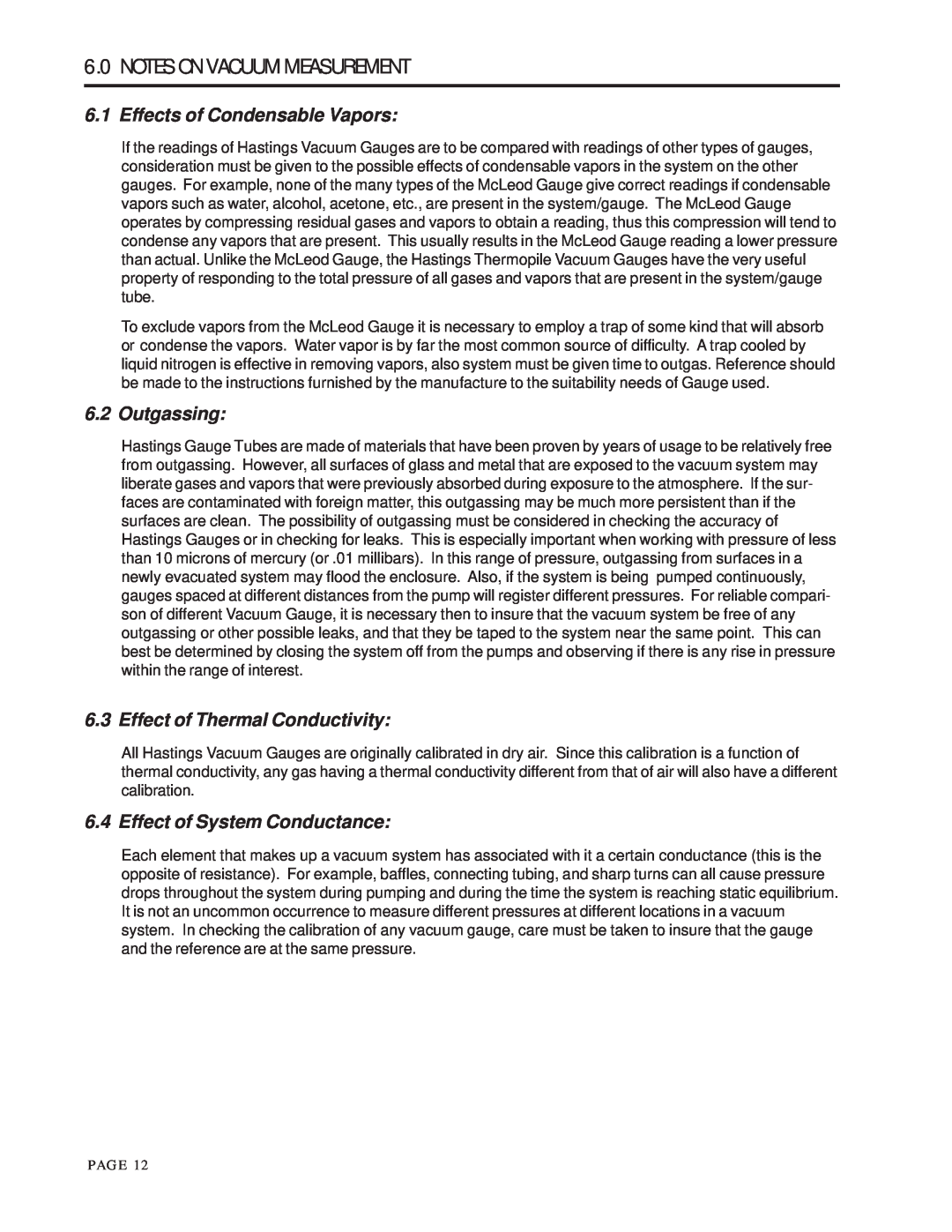6.0NOTES ON VACUUM MEASUREMENT
6.1Effects of Condensable Vapors:
If the readings of Hastings Vacuum Gauges are to be compared with readings of other types of gauges, consideration must be given to the possible effects of condensable vapors in the system on the other gauges. For example, none of the many types of the McLeod Gauge give correct readings if condensable vapors such as water, alcohol, acetone, etc., are present in the system/gauge. The McLeod Gauge operates by compressing residual gases and vapors to obtain a reading, thus this compression will tend to condense any vapors that are present. This usually results in the McLeod Gauge reading a lower pressure than actual. Unlike the McLeod Gauge, the Hastings Thermopile Vacuum Gauges have the very useful property of responding to the total pressure of all gases and vapors that are present in the system/gauge tube.
To exclude vapors from the McLeod Gauge it is necessary to employ a trap of some kind that will absorb or condense the vapors. Water vapor is by far the most common source of difficulty. A trap cooled by liquid nitrogen is effective in removing vapors, also system must be given time to outgas. Reference should be made to the instructions furnished by the manufacture to the suitability needs of Gauge used.
6.2 Outgassing:
Hastings Gauge Tubes are made of materials that have been proven by years of usage to be relatively free from outgassing. However, all surfaces of glass and metal that are exposed to the vacuum system may liberate gases and vapors that were previously absorbed during exposure to the atmosphere. If the sur- faces are contaminated with foreign matter, this outgassing may be much more persistent than if the surfaces are clean. The possibility of outgassing must be considered in checking the accuracy of Hastings Gauges or in checking for leaks. This is especially important when working with pressure of less than 10 microns of mercury (or .01 millibars). In this range of pressure, outgassing from surfaces in a newly evacuated system may flood the enclosure. Also, if the system is being pumped continuously, gauges spaced at different distances from the pump will register different pressures. For reliable compari- son of different Vacuum Gauge, it is necessary then to insure that the vacuum system be free of any outgassing or other possible leaks, and that they be taped to the system near the same point. This can best be determined by closing the system off from the pumps and observing if there is any rise in pressure within the range of interest.
6.3 Effect of Thermal Conductivity:
All Hastings Vacuum Gauges are originally calibrated in dry air. Since this calibration is a function of thermal conductivity, any gas having a thermal conductivity different from that of air will also have a different calibration.
6.4 Effect of System Conductance:
Each element that makes up a vacuum system has associated with it a certain conductance (this is the opposite of resistance). For example, baffles, connecting tubing, and sharp turns can all cause pressure drops throughout the system during pumping and during the time the system is reaching static equilibrium. It is not an uncommon occurrence to measure different pressures at different locations in a vacuum system. In checking the calibration of any vacuum gauge, care must be taken to insure that the gauge and the reference are at the same pressure.
PAGE 12
